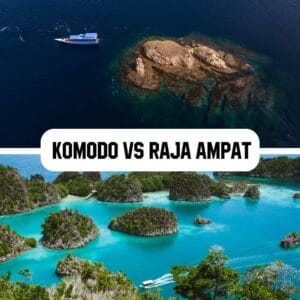Exploring the Enigmatic World of Muck Diving in Indonesia
Indonesia, with its abundant marine biodiversity, has long been hailed as a diver’s paradise. While the country is renowned for its stunning coral reefs and vibrant marine life, a lesser-known, yet captivating diving experience awaits adventurous souls – Muck Diving. In this article, we will delve deeper into the fascinating world of Muck Diving in Indonesia, uncovering its hidden gems, and offering valuable insights into this unique and thrilling underwater activity.
What is Muck Diving?
Muck diving is a specialized form of scuba diving that involves exploring muddy or silty seabeds instead of traditional coral reef environments. These seemingly unattractive underwater landscapes, often referred to as “muck” or “black sand” environments, might not appear visually appealing at first glance. However, upon closer inspection, they reveal a plethora of bizarre and mesmerizing critters that have adapted to this unusual habitat.
Why Indonesia for Muck Diving?
Indonesia boasts an astounding array of dive sites, and its muck diving destinations are no exception. The country’s volcanic origins and diverse coastal geography create an ideal breeding ground for the unusual marine life that thrives in muck environments. Some of the top muck diving locations in Indonesia include Lembeh Strait in North Sulawesi, Ambon, and Tulamben in Bali, among others.
Muck Diving Highlights
Critter Wonderland:
Muck diving promises encounters with a variety of macro marine life that is hard to find anywhere else. Seahorses, flamboyant cuttlefish, mimic octopuses, frogfish, and various species of nudibranchs are just a few of the captivating creatures awaiting your discovery. These creatures have evolved unique adaptations to thrive in their environment, making each encounter a fascinating experience.
Bizarre Camouflage:
Many muck dwellers have developed exceptional camouflage skills, making them masters of disguise. Observing their ingenious adaptations and unique color patterns is a photographer’s dream come true. From the leafy seadragon, perfectly blending with algae-covered rocks, to the wonderpus octopus imitating a toxic flatworm, each sighting is a testament to nature’s ingenuity.
Night-time Treasures:
Muck diving at night unveils a whole new dimension of the underwater world. Rare nocturnal creatures like stargazers, bobtail squids, and decorator crabs come out to play, providing a surreal and unforgettable experience. The eerie darkness transforms the mundane-looking seabed into an otherworldly stage, illuminated by the bioluminescence of various marine organisms.
Conservation and Responsible Muck Diving
While muck diving offers incredible opportunities for marine life enthusiasts, it is crucial to approach this delicate ecosystem with care and respect. Practicing responsible diving, such as avoiding contact with marine life, maintaining proper buoyancy, and using environmentally-friendly dive practices, ensures that we preserve these pristine environments for generations to come.
Underwater Photography and Muck Diving
Muck diving has become a haven for underwater photographers and videographers. The small size and slow movements of critters in these environments allow photographers to capture detailed close-ups and behaviors that might not be possible in larger, more dynamic marine ecosystems. It’s not uncommon to see photographers with high-powered macro lenses, patiently waiting for the perfect shot of a rare species.
Muck Diving Destinations in Indonesia
Indonesia offers a diverse range of muck diving destinations, each with its unique charm and peculiar inhabitants. Lembeh Strait, renowned as the “Critter Capital of the World,” tops the list of must-visit spots for muck diving enthusiasts. Here, you’ll find a variety of critters, from the infamous hairy frogfish to the adorable pygmy seahorses. Ambon, known for its macro marine life and thriving underwater biodiversity, is another gem for muck diving explorations. In Tulamben, Bali, the wreck of the USAT Liberty has created an artificial reef and a haven for muck diving enthusiasts. The volcanic black sand in Tulamben houses rare species such as the mimic octopus and blue-ringed octopus. Other notable muck diving destinations in Indonesia include Puri Jati, Padang Bai, and Seraya Secrets.
Muck Diving Critters Photos
Muck Diving and Citizen Science
Muck diving has also become a platform for citizen science initiatives. Divers often assist in documenting marine life and recording data for various conservation projects. Organizations like Project AWARE and Reef Check encourage divers to contribute to the scientific community by reporting their sightings and observations during muck diving expeditions.
Muck diving in Indonesia offers a one-of-a-kind adventure for scuba enthusiasts seeking to explore the hidden wonders of the ocean floor. From peculiar critters to astonishing camouflage, every dive presents an opportunity to witness the extraordinary. By embracing responsible diving practices and supporting conservation efforts, we can safeguard these unique ecosystems and continue to be awe-inspired by the wonders of muck diving in Indonesia. So, put on your dive gear, immerse yourself in the enchanting world beneath the waves, and prepare to be captivated by the magic of muck diving. Book our exploration trips to find some amazing critters here in Komodo .
Happy diving!”

10 Things You Should Never Do After Scuba Diving | Dragon Dive Komodo

The Best Time to Dive in Komodo National Park: Seasons, Conditions & Marine Life

Komodo vs Raja Ampat – Which Destination Is Better for Diving?

The Ultimate Guide to Indonesia’s Best Liveaboards: Dive Komodo, Alor & Raja Ampat




